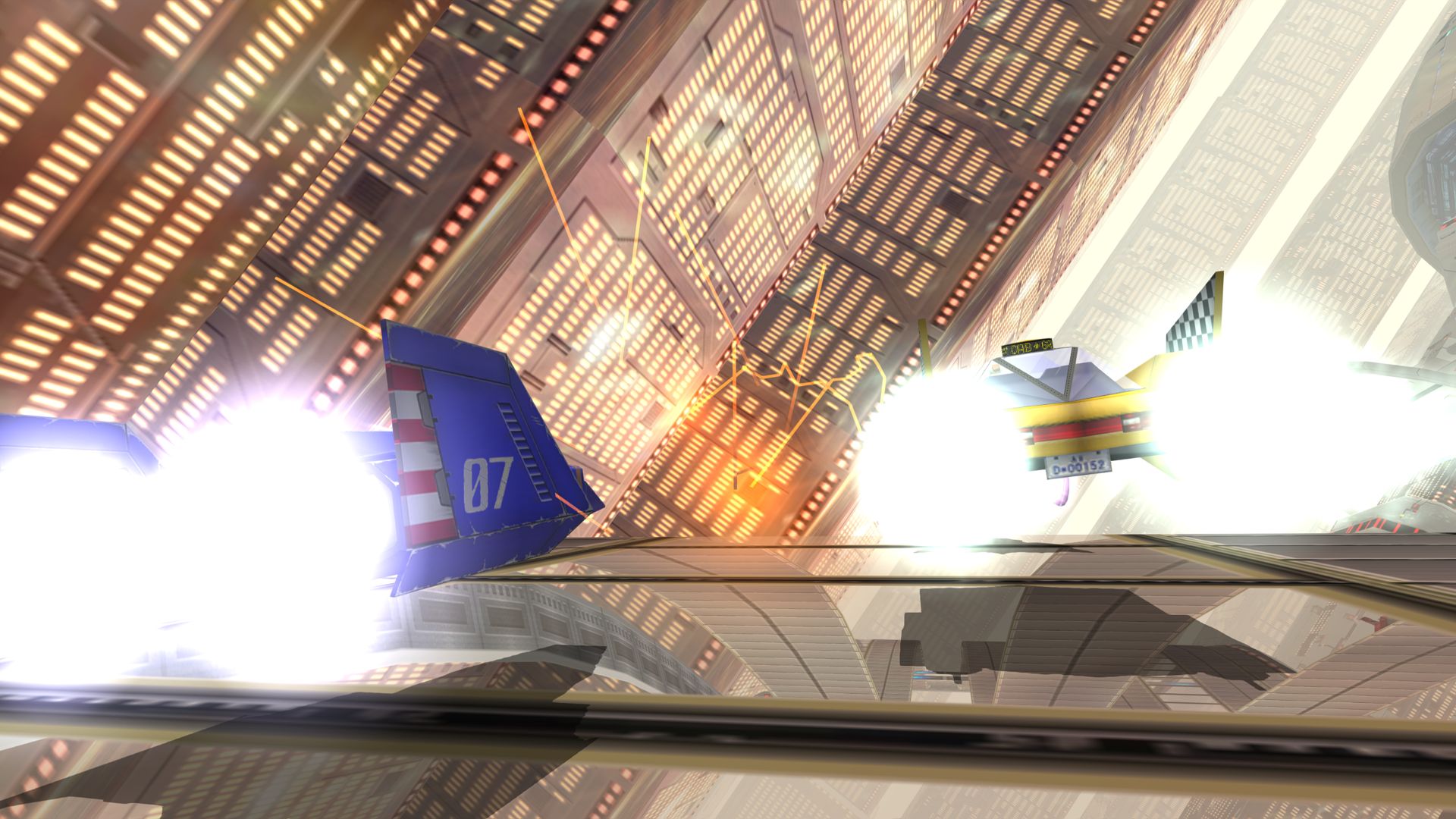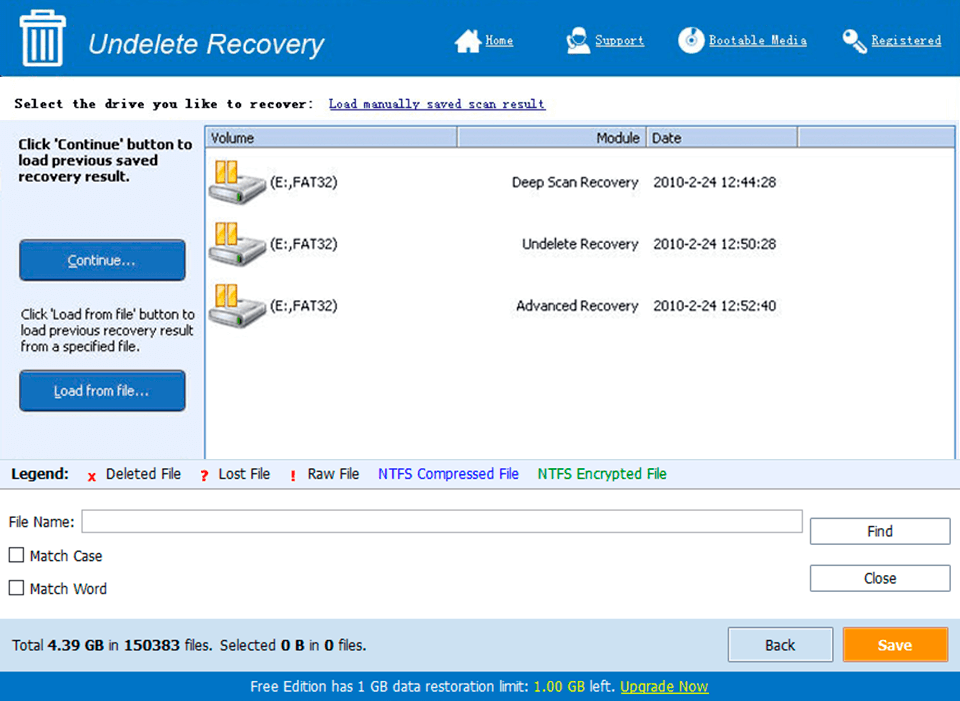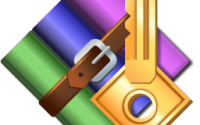
Dolphin Emulator Enhancements Archives

Dolphin Emulator Enhancements Archives
Dolphin Emulator
 | |
|---|---|
| Type: | Nintendo Wii and Nintendo GameCube Emulator |
| Developer(s): | Dolphin Emulator Project |
| Stable Release Versions: | Version 5.0, Version 4.0, Version 3.5 |
| Operating System: | Windows, Linux, MacOS |
| Written in: | C/C++ |
| License: | GNU GPLv2+ |
| Website: | Dolphin Emulator |
Dolphin is a Wii and GameCube emulator with high compatibility across the majority of titles for both platforms. It was first developed as closed source in 2003, and as open source since 2008.
It allows PC gamers to enjoy games for these two consoles in full HD (1080p) with several enhancements: compatibility with all PC controllers, turbo speed, networked multiplayer, among other things.
Setting up Dolphin
Main article: Installation Guide(on wiki.dolphin-emu.org)
Basic steps
- Download Dolphin emulator from here (Nightly Builds), or from here (Stable).
Please read about the differences in Dolphin versions below.
- Extract the contents of the .zip file you just downloaded to a folder of your choice.
- Run Dolphin.exe
Differences in Dolphin Versions
Those differences are specific to NSMBW and irrelevant to other games.
| Dolphin 4.0.1 | Dolphin 5.0 | Dolphin Nightly | |
|---|---|---|---|
| Graphical Functions | Set Texture Cache to Safe for coins to spin Set EFB Copies to RAM as well | Texture Cache = Fast can be used | Texture Cache = Fast can be used |
| Gameplay Dump (synchronized) | A/V not synchronized Use Dolphin 4 AVSync | Function integrated | Function integrated |
| Record output from .dtm file | Does not seem to work | Seems to work for most people | Function integrated |
| On-the-fly Changes | Can replace level on-the-fly with identical/smaller level | Can replace level on-the-fly with identical/smaller level | Level size not allowed to change. See Fixed Level Size in Reggie Preferences for a handy solution to that problem |
It is recommended to use Version 5.0 or a Nightly Build.
Dolphin emulator can open Wii ISO files, WBFS (Wii Backup File System) files, and also play the extracted contents of such files. The setup procedure for the third method is more complex, but allows to edit levels on-the-fly, while the emulator is running. Please consider, that it's also very time-consuming to create a new ISO/WBFS archive each time something has changed in your game. Please see No-ISO Method (Extracted Game).

To populate the list of available games, it's needed to to setup the Game Folders where Dolphin will look for games. Click on Config, then select the tab Paths and add directories with ISO/WBFS files in them to the list. Proceed by pressing Ok. The list in the main window should now show your games.
It's also possible to add paths to .dol files from extracted games to this list. This will be explained later in the tutorial.
No-ISO Method (Extracted Game)
It is advised to use this method for extensive testing.
Requirements:
- Wii ISO of the game you want to extract
- Dolphin 5.0 Nightly Build (Dolphin 5.0 stable doesn't have the option to extract the entire disc).
Dolphin is capable to play the extracted contents of a Wii ISO or WBFS file. This makes it very easy to edit files in general, and especially easy to edit a level on-the-fly. First we need to obtain the game files. The steps are similar compared to this tutorial (Obtain Original Game Files), with the exception that we need to extract the entire disc instead of just Partition 1. You can follow the steps in the above tutorial, or read on for the precise steps.
- Open Dolphin Emulator with your game populated in the Games List. Select it in the main window pane, right-click it and select the entry Properties.
- In the window that opens, go to the Filesystem tab.
- Once there, right-click on Disc and select the entry Extract Entire Disc.... Choose a folder for your files and click on Ok.

- You should now have a DATA folder. Inside that folder are 3 more folders, disc, files, and sys, along with the files cert.bin, h3.bin, ticket.bin, and tmd.bin. This folder is also called a Dolphin Game Patch.
- The final step is to point Dolphin to the DATA directory. This can be done, by clicking on Config, navigating to the Paths tab, and adding the path to the DATA folder to the Game Folders list.
Please read on. We'll be talking about how to use more than one extracted game patch in parallel.
Dolphin Game Patches
It is possible to use multiple extracted games in parallel. Useful if you have to supervise more than one project.
How to create multiple custom Game Patches based on Newer
- Create a folder for your Dolphin game patches. As an example, we'll be using:
Games is the Dolphin Game Patches folder. You can choose any folder name you like of course.
- Extract the entire disc of Newer Super Mario Bros. Wii as shown in the No-ISO Tutorial.
- Rename the DATA folder to Newer and move the entire folder to the Games directory created above.
- This is now your Newer Super Mario Bros. Wii Dolphin Game Patch. It is recommended to keep one such patch untouched.
- Now copy the entire Newer folder (it's around 350MB) and paste it into the Games directory again. Choose anything you want as a folder name, but it's recommended to use your project name. In the example image it's just called YourGamePatch.

You should now have an entire copy of the game in both folders.
- Last step is to add the directory with the game patches to your Game Folders list in ->Preferences ->Paths, and select the checkbox Search Subfolders.

All your game patches in that folder should now show up in the list. More custom game patches can be added as well if needed. It's also possible to add NSMBW (original game) as a Dolphin game patch, alongside Newer patches.
To start an extracted game now, simply double-click on it in the list.
Savestates
Savestates is a feature that saves the exact spot you are in any game. You can use this feature manually by going into the File menu or by quick keyboard shortcuts.
Using save states:
- Capturing a save state: To capture a save state go to . The keyboard shortcut for saving a save state is .
- Loading a save state: To load a save state that you previously saved, go to . The keyboard shortcut for loading a save state is .
- Ten save slots! Dolphin allows you to save up to 10 different save states. By default, it is set to slot “1”. You can change the slot by going to . Then select the desired slot.

TAS
Needed?
Cheats
Main article: Cheats
Main article: Gameplay Recording
Main article: Screenshots
Dolphin Emulator: What It Is and How to Install? (PC, Wii, PS4)
Do you love to play popular GameCube or Wii games but don’t own a Wii or GameCube console? If yes, then you can try installing and setting up the Dolphin Emulator for your PC. Although there are numerous emulators available on the market, it’s no doubt that the Dolphin Emulator is the most popular program to help you play console games.
Are you interested to know all the essential details about the Dolphin Emulator? Read on and discover how to use Dolphin Emulator for your gaming needs and install it for yourself.
What Is an Emulator
An emulator is a program that enables one computer system to imitate or emulate the functions of another computer system. It enables the host computer to launch peripheral devices, software, and other components developed for the guest computer. Emulators have different types, emulating things such as CPU, operating systems, software, hardware, and applications. It commonly imitates the hardware component or architecture of the guest system.
Nowadays, the term emulator is generally used in the concept of video games. Emulators for video games became well-known during the 1900s. They let people play games for consoles like the Atari 2600 and Nintendo Entertainment System on modern PCs. With the trend of tablets and smartphones, emulators compatible with Android or iOS on computers have become popular.
How to Download the Dolphin Emulator
You can download the latest version of the Dolphin Emulator from the downloads section of Dolphin’s official site. You will need a fast processor that is compatible with the SSE2. However, the more cores, the more optimized your system performance will be. Also, you will need a graphics card that supports Pixel Shader 2.0 or higher to successfully download and install the Dolphin Emulator.
There are two versions for the Windows operating system. If you are not sure about your PC’s version, you may verify your computer’s system properties. Dolphin Emulator isn’t compatible with 32-bit operating systems. For Mac users, there are available macOS and Mac OS X installer versions.
You can download Dolphin Emulator installers for Windows and Mac in three major versions. These are Beta Versions, Development Versions, and Stable Versions. The stable versions get deployed after numerous phases of testing. They release these less often; thus, they are generally outdated and lack new features. The Development versions get updated in real-time, whenever the developer makes changes.
With the Development version, you get the latest and greatest updates and features. Unlike the Stable version, they are less tested; therefore, you might encounter minimal glitches that are quickly addressed by developers. On the other hand, the Beta versions are deployed monthly together with a Progress Report.
All versions are packed with 7zip; however, numerous archive managers will extract the package files such as WinRAR.
How to Install the Dolphin Emulator
If you’re wondering which of the three versions is ideal, we recommend the Development version. Since it is often updated, you can get the latest features and enhancements of the Dolphin Emulator. In this guide, we will use the Development version as a baseline. However, if you want to use other versions, the process is pretty much the same.
Dolphin Emulator Installation on Windows
Prerequisites:
- Verify the version of your Windows operating system, i.e. if they are x64 or x86, so you can download the right package for your PC.
- Ensure that your computer has met the standard minimum requirements for downloading and installing the Dolphin Emulator.
- Download Microsoft’s Visual C++ Redistributable for Visual Studio 2019.
- Download 7-Zip or WinRAR for package extraction.
How to download:
- Choose the version you’d like to download for your Dolphin Emulator installer via the official download page.
- Click the Windows x64 button.
- If prompted for a destination folder, choose which path you’d like to save the package. We recommend creating a new folder exclusively for Dolphin and your emulator games.
- Once downloaded, open the folder where you saved your Dolphin packaged installer and extract it.
- To extract the package folder, right-click on the folder, e.g. “dolphin-master-your-version,” and select 7-Zip > Extract To “dolphin-master-your-version.”
- Once you’ve extracted all the files, open the Dolphin-x64 folder.
- Double click on the Dolphin Emulator’s executable file, i.e. “Dolphin.exe”
Dolphin Emulator Installation on Mac
How to download:
- Choose the version you’d like to download for your Dolphin Emulator installer via the official download site.
- Click the macOS button.
- Once the download has started, wait for it to complete before you proceed. You can see the progress on the bottom left-most part of your browser.
- Go to your Downloads folder.
- Double click on the “dolphin-master-your-version.dmg” file.
- Drag and drop/copy the Dolphin Emulator icon to your Applications folder.
- Once you complete the installation, click the Dolphin Emulator program.
How to Use the Dolphin Emulator
We recommend placing all your ISOs/ROMs in a separate folder that you can easily locate. For instance, you may create a folder named “Wii and GameCube Games” inside the same folder where you saved your packaged files. To start playing Wii games and/or GameCube games with the Dolphin Emulator, perform these steps:
- Launch the Dolphin Emulator and select Config.
- Go to the Paths tab.
- Click the Add… button.
- Locate and select the folder that contains all your games.
- Close the Configuration panel and select Refresh. You should see your games displayed on the main menu.
- Double-click the specific game you want to launch on the Dolphin Emulator.
- If you want to save your game’s progress, navigate to Emulation > Save State in the Dolphin main panel.
- If you want to continue to where you’ve left the game, go to Emulation > Save State and select Load State.
Game Configuration for Dolphin Emulator
You can also make customizations for each game. For instance, you can enable cheats for a specific game through these steps:
- Right-click on your preferred game to configure in the Dolphin main panel and click on Properties.
- Go to the AR Codes tab.
- Tick the boxes beside the cheats that you wish to activate.
- Restart the Dolphin Emulator to apply the changes you’ve made.
If you want to apply other custom settings for specific games, you can do so with the Properties tab. If you want to tweak other settings, the Dolphin Emulator allows you to overwrite default settings through a notepad document. For a full list of custom settings, you can visit the Dolphin Wiki Site. To edit Dolphin’s default settings, you may follow these steps:
- Right-click on the specific game in the Dolphin main menu and click on Properties.
- Go to the GameConfig tab.
- Navigate to and select the Edit Config button.
- Input your desired custom settings on the notepad document.
- Once you’ve finished tweaking the settings, Save your changes, and exit the Notepad document.
Game Compatibility with Dolphin Emulator
As a best practice, you should check your favorite Wii games and GameCube games if they are compatible with the Dolphin Emulator. That said, you don’t want to waste time and effort in downloading and installing a game that isn’t compatible with the emulator in the first place. There are two ways to check your games’ compatibility with Dolphin such as the following:
- Search for your specific games on the Dolphin Emulator Wiki page under Compatibility Lists
- Right-click on each game and select “Wiki”
Each game’s Wiki page will provide you with all the details you need to know on compatibility issues with Dolphin Emulator. It also includes links to enhancements, widescreen codes, and other essential information. You can use these pieces of information to ensure your games are compatible with Dolphin.
Display/Graphics Settings in Dolphin Emulator
If you own a high-end gaming PC, you can launch Wii games and GameCube games at their default speeds. If you want to customize the display/graphic settings, you can access Graphics on the Dolphin Emulator main panel.
General Tab
Backend Options:
- OpenGL – The commonly used option. It delivers good performance and has minimal in-game glitches or issues.
- DirectX 11 – Depending on the game’s nature, you may encounter better or worse game performance.
- Vulkan – Otherwise known as “experimental,” it provides you with great performance enhancements. But it is more prone to errors and bugs compared to the other Backend Options.
- Software Renderer – It is only useful for developers of the emulator. It has a very slow performance and doesn’t provide any enhancements. It will try to mimic exactly the GameCube/Wii.
- Null – As its name goes, it performs nothing.
Under General, you can also tweak the following settings:
- Display: Fullscreen Resolution, Aspect Ratio, V-Sync, Others
Enhancements Tab
- Internal Resolution relates to game resolution. Dolphin recommends to select 2x Native as a standard and increase it until you start to encounter performance issues.
- Anti-Aliasing will reduce the noise in an image making it sharper and clearer. It is a performance-consuming setting; therefore, it is best to set it to “None” until you can find a convenient resolution for your games.
- Anisotropic Filtering can be configured to 16x or 18x if you encounter performance glitches. It is a free visual fidelity on your computers.
- Ubershaders will integrate a shader compilation to your start-up game but it will save you lag spikes in games such as Metroid Prime Trilogy, or Xenoblade. You can use the “Hybrid” setting if you have a newer GPU.
- Post-Processing Effects will just integrate post-processing to your images. It may affect performance slightly but you are free to experiment with this feature.
Other custom settings under Enhancements include the following:
- Scaled EFB Copy
- Force Texture Filtering
- Disable Fog
- Per-Pixel Lightning
- Widescreen Hack
- Force 24-Bit Color
- Stereoscopic 3D Mode
- Stereoscopy Depth
- Stereoscopy Convergence
- Swap Eyes
Hacks Tab
- Skip EFB Access From CPU provides you with performance gains but compromises playability and compatibility. You should leave it unticked.
- Ignore Format Changes enhance performances with minimal to zero downsides.
- Store EFB Copies To Texture Only provides you with higher performance but lesser accuracy. This configuration is fine in general; however, you may need to deactivate it on a per-game basis.
- Texture Cache is great on Fast level with enabled GPU Texture Decoding for discrete GPUs.
- We recommend that you disable External Frame Buffer (XFB) unless a specific game requires activation.
- Other settings deliver visual and performance enhancements in some specific cases.
Advanced Tab
Unless you have the technical expertise and/or a developer, most configurations here are better left alone. On the other hand, you can activate the “Prefetch Custom Textures” and “Load Custom Textures” if you will be requiring them. The “Enable Progressive Scan” setting is safe to activate but won’t have any impact on most games.
Dolphin Emulator for Android
The Dolphin Emulator for Android is still in beta version and requires Android devices with versions 5.0 or higher. If you own a powerful tablet, you can comfortably play GameCube games using a real controller or touchscreen overlay. On the contrary, playing Wii games are quite challenging since there is a current lack of motion control support.
How to Speed Up the Dolphin Emulator
As a video game emulator, Dolphin will definitely impact the performance of your computer versus the original Wii and GameCube hardware. The good news is that these outdated game consoles and new computer hardware are more powerful and efficient than ever. Specific Wii games and/or GameCube games can generally run at full speed without disruptions.
You can configure most of the speed enhancements and tune-up of the Dolphin Emulator on the Graphics tab.
Recap
You can reduce the display resolution easily since it is one of the most common methods to speed up a GameCube game or Wii game emulated in the Dolphin Emulator. In the General tab, disable the V-Sync feature under the Display section. For Basic, you can use the default setting for the Adapter.
The Aspect Ratio is significantly important since most Wii games can display in Widescreen 16:9 while most GameCube games default to 4:3. That said, you may switch the Aspect Ratio depending on which console games you are trying to play at the moment. Activate the “Use Fullscreen” feature to display games like on TV.
Enhancements
Disable the Anti-Aliasing feature under this tab. If your PC doesn’t have a discrete graphics card, set the Internal Resolution to either “Auto” or “Native.” Select the “Disable Fog” if you can’t see in-game objects at long ranges.
Hacks
This section is basically for configuring the settings based on the performance of each game. You will only use it if a specific game encounters any errors or bugs. You can refer to the Dolphin Emulator Wiki for troubleshooting or tweaking guides.
Advanced
As mentioned, this tab is only ideal for users who have the technical expertise and want to play around the custom settings.
Are you ready to take on a nostalgic ride by playing gold Wii and/or GameCube games such as the Smash Brothers? Go ahead and use this guide as your reference for everything there is to know about the Dolphin Emulator as your first video game emulator.


Earlier this month, an interesting development within the Wii reverse engineering scene was announced as Fullmetal5 revealed that they had hacked the Wii Mini via a Bluetooth exploit. This bookends a flurry of a Wii Mini hacking, including rigorous hardware modding by DeadlyFoez. You may be wondering, "Wait, wasn't the Wii hacked over a decade ago?". That's true, but the Wii Mini stubbornly remained unhacked all the way into 2019.
This resiliency came from the Wii Mini's cut down nature: it physically lacks the attack vectors that were used against the original Wii. In total, the Wii Mini was missing GameCube support, with no GameCube controller ports or Memory Card slots, lacked internet and browser support, and they completely removed the SD card slot. With so few attack surfaces, hackers have had to get inventive. DeadlyFoez created "FrankenWiis", mixing Wii Mini hardware and standard Wii hardware, to create exploit options and dump the Wii Mini firmware. This was as far as anyone could go, until Fullmetal5 found the holy grail: an exploit in the standard Wii Mini configuration, through the Bluetooth stack! This exploit completely opens the Wii Mini, allowing for arbitrary code execution to dump and/or load data over the Wii Mini's USB ports. The exploit is currently not public, but when it is released, users will be able to run homebrew on the Wii Mini just like any other Wii console, without any hardware mods. If you're interested at all in the Wii Mini and its many differences, feel free to checkout some of DeadlyFoez's videos of their efforts. It's a very strange little machine.
Update: During the writing of this article, the exploit was released!.
With the Wii Mini Menu dumped, the main question for us was... does it run in Dolphin?
The answer is yes! In addition to that, Fullmetal5 also adjusted Dolphin to correctly detect Mini Wii Menu versions. While there isn't much practical use for running this cut down Wii Menu in Dolphin, it was exciting to finally see one of the last unhacked pieces of Wii hardware fall. We'd like to wholeheartedly thank everyone involved for their efforts toward Wii hacking and preservation.
With that out of the way, we have a few changes of our own to go through. While the end of the summer was a bit slow, there are still some essential fixes for several popular games and finally EFB Access is working correctly on Adreno devices... at least in Vulkan. Let's jump into August and September's Notable Changes without further delay!
Continue reading
You can continue the discussion in the forum thread of this article.
Источник: [https://torrent-igruha.org/3551-portal.html]What’s New in the Dolphin Emulator Enhancements Archives?
Screen Shot

System Requirements for Dolphin Emulator Enhancements Archives
- First, download the Dolphin Emulator Enhancements Archives
-
You can download its setup from given links:


